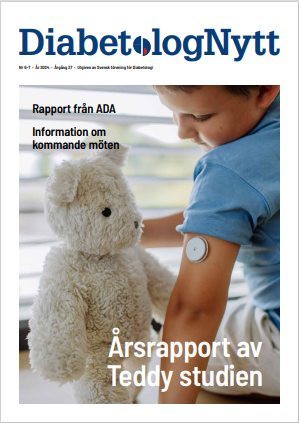Mortality trends and cause of death in patients with new-onset type 2 diabetes and controls: A 24-year follow-up prospective cohort study
Andersson T, Hjerpe P, Carlsson AC, Pivodic A, Wändell P, Manhem K, Bengtsson Boström K
Diabetes Research and Clinical Practice
Volume 138, April 2018, Pages 81-89
Abstract
Aims
Our aim was to assess causes of death and temporal changes in excess mortality among patients with new-onset type 2 diabetes in Skaraborg, Sweden.
Methods
Patients from the Skaraborg Diabetes Register with prospectively registered new-onset type 2 diabetes 1991–2004 were included. Five individual controls matched for sex, age, geographical area and calendar year of study entry were selected using population records. Causes of deaths until 31 December 2014 were retrieved from the Cause of Death Register. Adjusted excess mortality among patients and temporal changes of excess mortality were calculated using Poisson models. Cumulative incidences of cause-specific mortality were calculated by competing risk regression.
Results
During 24 years of follow-up 4364 deaths occurred among 7461 patients in 90,529 person-years (48.2/1000 person-years, 95% CI 46.8–49.7), and 18,541 deaths in 479,428 person-years among 37,271 controls (38.7/1000 person-years, 38.1–39.2). The overall adjusted mortality hazard ratio was 1.47 (p < .0001) among patients diagnosed at study start 1991 and decreased by 2% (p < .0001) per increase in calendar year of diagnosis until 2004. Excess mortality was mainly attributed to endocrine and cardiovascular cause of death with crude subdistributional hazard ratios of 5.06 (p < .001) and 1.22 (p < .001).
Conclusions
Excess mortality for patients with new-onset type 2 diabetes was mainly attributed to deaths related to diabetes and the cardiovascular system, and decreased with increasing year of diagnosis 1991–2004. Possible explanations could be temporal trends of earlier diagnosis due to lowered diagnostic thresholds and intensified diagnostic activities, as well as improved treatment.
Länken nedan är aktiv till den 11 april och leder till artikeln i fulltext utan lösenord.
Nyhetsinfo
www red DiabetologNytt
Träffar: 2





